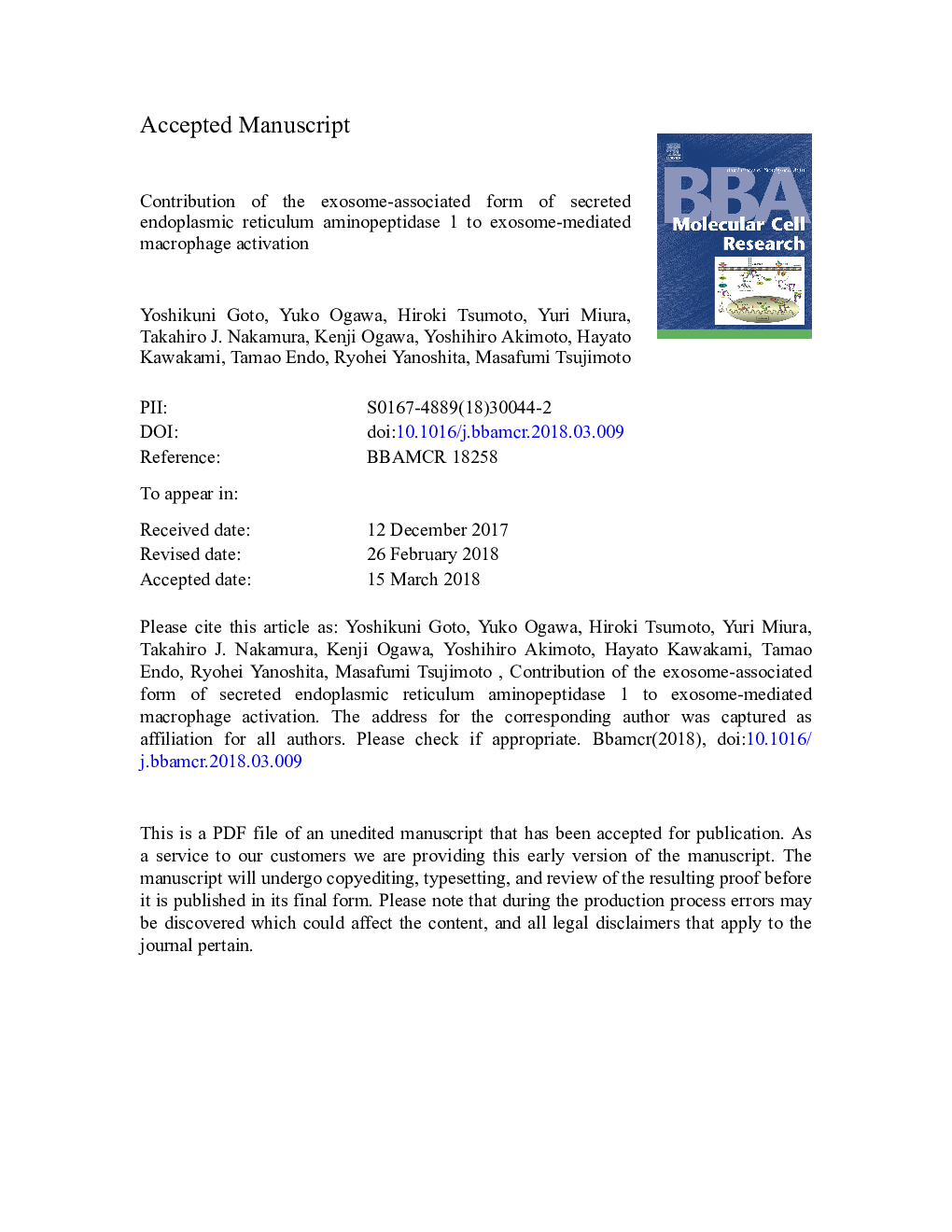| Article ID | Journal | Published Year | Pages | File Type |
|---|---|---|---|---|
| 8303665 | Biochimica et Biophysica Acta (BBA) - Molecular Cell Research | 2018 | 62 Pages |
Abstract
Macrophages secrete endoplasmic reticulum aminopeptidase 1 (ERAP1) in response to lipopolysaccharide (LPS) and interferon (IFN)-γ to enhance their phagocytic and nitric oxide (NO) synthetic activities. In this study, we found that a subset of secreted ERAP1 bound to exosomes released from LPS/IFN-γ-treated murine RAW264.7 macrophages compared to untreated cells. ERAP1-bound exosomes enhanced phagocytic and NO synthetic activities of macrophages more efficiently than free ERAP1 and exosomes derived from untreated cells. Deletion of the exon 10 coding sequence in ERAP1 gene resulted in loss of binding to exosomes. By comparing the activities of exosomes derived from wild-type and ERAP1 gene-deficient RAW264.7 cells, we observed that ERAP1 contributed to the exosome-dependent phagocytosis and NO synthesis of the cells. Upon stimulation of RAW264.7 cells with LPS/IFN-γ, TNF-α, IFN-γ, and CCL3 were also associated with the released exosomes. Analyses of cytokine function revealed that while CCL3 in the exosomes was crucial to the phagocytic activity of RAW264.7 cells, TNF-α and IFN-γ primarily contributed to the enhancement of NO synthesis. These results suggest that treatment with LPS/IFN-γ alters the physicochemical properties of exosomes released from macrophages in order to facilitate association with ERAP1 and several cytokines/chemokines. This leads to exosome-mediated enhancement of macrophage functions. It is possible that packaging effector molecules into exosomes upon inflammatory stimuli, facilitates the exertion of effective pathophysiological functions on macrophages. Our data provide the first evidence that ERAP1 associated with exosomes plays important roles in inflammatory processes via activation of macrophages.
Keywords
Related Topics
Life Sciences
Biochemistry, Genetics and Molecular Biology
Biochemistry
Authors
Yoshikuni Goto, Yuko Ogawa, Hiroki Tsumoto, Yuri Miura, Takahiro J. Nakamura, Kenji Ogawa, Yoshihiro Akimoto, Hayato Kawakami, Tamao Endo, Ryohei Yanoshita, Masafumi Tsujimoto,
